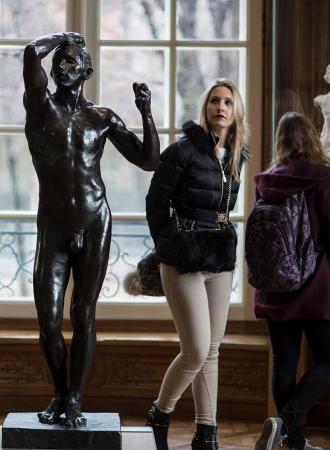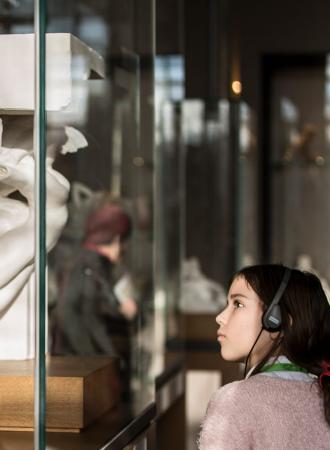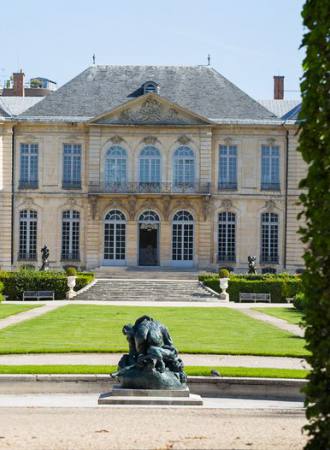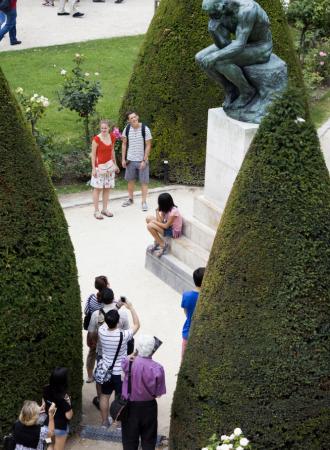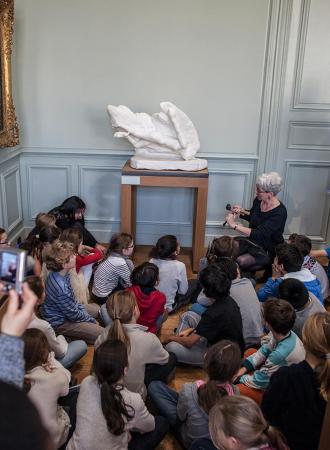Search the site
Call for papers | What does a sculpture do to a garden? What does a garden do to a sculpture?
This symposium is part of the 22nd edition of the Rendez-vous aux jardins, taking place on Friday June 6, Saturday June 7 and Sunday June 8, 2025, under the theme “Stone gardens - garden stones”.
Under the scientific direction of Emmanuelle Héran, Chief Curator, Head of Garden Collections, Musée du Louvre
Friday, June 6, 2025
Paris, Musée Rodin, Léonce Bénédite auditorium
This event will be webcast live
Submissions should be sent before 31 March 2025 to : colloques@musee-rodin.fr.
While closely linked since Antiquity, the relationship between sculpture and gardens was rekindled during the Renaissance. Rodin himself pondered this connection, as Paul Gsell recounts in Art: “Statues are usually placed in gardens to embellish them. For Rodin, gardens are here to adorn the statues. For him, Nature remains the supreme mistress, an infinite perfection.”
And yet, works tracing back the history of gardens often give little to no consideration to the statuary that inhabits them. Conversely, sculpture scholars rarely reflect on the unique setting granted by gardens, or on what a sculpture, in turn, can bring to a garden. In both fields, publications are frequently illustrated with tightly framed photographs of sculptures, isolating them as if displayed within a museum—or even entirely cut out from their surroundings. Yet, a garden is not a museum; it offers to three-dimensional works neither the neutrality of a "white cube" nor even the illusion of a "green cube" beneath an open sky.
Indeed, what could be more subject to change, more ephemeral, than a garden? As seasons pass, with the shifting hours of the day and the whims of the weather, the environment surrounding a sculpture is in constant flux. While there does exist a “museography” for gardens—defined both as the art of displaying sculptures within them and as the composition of gardens incorporating sculpture—it has never been the subject of a comprehensive study. It is scarcely taught, neither to curators overseeing an “open-air sculpture museum” nor to landscape architects and garden designers responsible for their creation and upkeep. In this regard, Louis Gevart’s dissertation broke new ground.1
The question of meaning also arises. In royal and aristocratic parks and gardens, a sculptural ensemble may follow a coherent iconographic program, whose analysis reveals political intentions—such as the renowned Grande Commande of 1674 for Versailles. More often, however, groves and lawns host a disparate collection, whose coherence—if it ever existed—may have faded over time. The history of a collection displayed in a garden can mirror that of a museum. Yet it may also be entirely different, as the works placed in a garden are not necessarily commissioned pieces or first choices. Some may have arrived belatedly, by default, left outdoors for lack of a better option, or, when too damaged or vandalized, removed in haste.
It is thus possible that a restoration, conversion or ex nihilo creation project requires a landscape architect to address the difficult issue of sculptures. In the world of historical monuments, managing a set of statues does not always fall under the responsibility of the chief architect, but of a heritage curator. This separation of powers is worth examining: is it relevant or counterproductive? How can dialogue be established? The choice of materials, their adaptability and durability can all be considered. Site-specific works created in close collaboration with a garden can be cited, such as Giuseppe Penone and Pascal Cribier's L'Arbre des voyelles in the Tuileries Gardens.
During the 20th century, sculpture parks and gardens—created with this intent— focused more on presenting a “living history of sculpture under construction” (Louis Gevart). Iconographic objectives may have been replaced by the production of a historical-stylistic narrative, without soliciting the help of a landscape architect. However, as the profound changes recently made to Middelheim Park in Antwerp and the recreation of entire programs at Stowe demonstrate, a return to iconographic coherence does seem to be taking place, in response to the public's presumed expectations.
This symposium welcomes case studies of the same work in different sizes and materials, whose effect on a garden can be decisive for its composition or, on the contrary, become unremarkable. Think of copies of famous ancient sculptures—the Farnese Hercules, the Diana of Versailles—whose use, identified by Haskell and Penny in 1981 and recently revised, continues. Also welcome are examples of sculptures whose contribution to a garden does not appear to be essential, or of attempts that have proved inconclusive, or of bases that have been left empty or refilled. The crucial question remains that of the usefulness and relevance of a three-dimensional work within a garden environment. In other words, what does a sculpture do to a garden? And what does a garden do to a sculpture?
This call is addressed to art historians specializing in gardens or sculpture. It is also aimed at park and garden managers, heritage architects and landscape architects who have carried out preliminary studies or restoration work on historic gardens, so that they can share their thoughts and recent field practices, carried out in close collaboration with art historians and sculptors. It will focus on the following questions:
- What is the use of sculpture in a garden?
- Iconography: the search for coherence
- When the statue is missing / The empty base
- What materials are used in a garden?
- Landscape architects and sculptors / Site-specific works
Submissions
Submissions should include a title, an abstract (between 1,500 and 2,000 characters) and a brief biographical note (between 500 and 1,000 characters). They should be sent before March 31, 2025 to colloques@musee-rodin.fr
Research committee
Emmanuelle Héran, Chief Curator, Head of Garden Collections, musée du Louvre
Amélie Simier, Chief Curator, Director, Musée Rodin
Véronique Mattiussi, Head of the Research Department, Musée Rodin
Franck Joubin, Researcher and Conference Coordinator, Musée Rodin
Visuel : Edvard Munch (1863-1944), Le Penseur de Rodin dans le parc du Dr Max Linde à Lübeck, vers 1907, huile sur toile, H. 143 ; L. 98 cm, Paris, musée Rodin, achat en 1981, P.07612
1Louis Gevart, La Sculpture et la terre. Histoire artistique et sociale du jardin de sculpture en Europe (1901-1968), PhD thesis in art history, under the direction of Thierry Dufrêne, Université Paris Ouest La Défense, January 2017.
